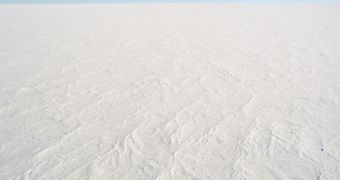Scientists at the University of Saskatchewan in Canada, led by William Patterson, have demonstrated that the script behind the movie “The Day after Tomorrow” may have not been so far-fetched when showing a Deep Freeze taking over the world in just a few weeks. They argue that the latest Ice Age to have swept Europe set in within a few months, and endured for many years before finally letting up. The investigators also discovered the main trigger of such an event – the shutdown of the North Atlantic circulation, AlphaGalileo reports.
According to previous researches, such a process would take a few decades to complete. But the new study shows that the Northern Hemisphere could fall prey to the Ice Age within less than six months after the necessary conditions are met. The Canadian researchers bring the Younger Dryas, also known as the “Big Freeze,” as proof. This was an event more than 12,000 years ago, which saw the creation of a mini-Ice Age in the northern continents. Though it only set in a matter of months, it lasted for more than 1,300 years, causing a large number of climatic changes across Northern Europe, Asia and America.
The Big Freeze began shortly after a massive body of sweet water, the glacial Lake Agassiz, broke its bank and poured into the Northern Atlantic Ocean. The lake previously covered an area that was larger than all of the modern Great Lakes combined, and held more water than contained by all lakes in the world today. The massive water influx turned off the pump that converted the warm water into cooler one, all while evaporation formed large masses of clouds that kept Europe warm. Human civilization in the region fell apart because of it.
Previous ice-core data of the events showed that the Young Dryas took place in less than a decade, and the new study was the most precise of them all. This was ensured by the thinness of the ice samples that were used for analysis. They were no more than 0.5 millimeters thick, and were cut off the larger samples using a scalpel. Their thinness represented one to three months each, and, using that, the researchers were able to conclude that the Big Freeze took just a few months to form.

 14 DAY TRIAL //
14 DAY TRIAL //